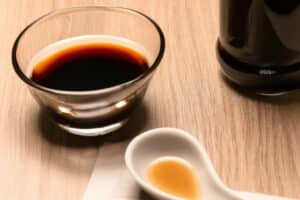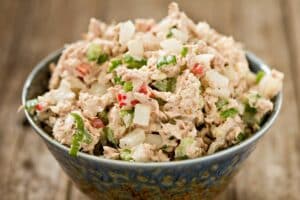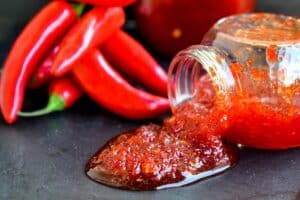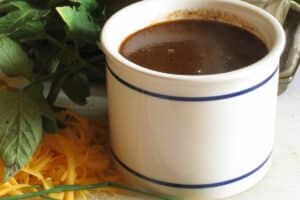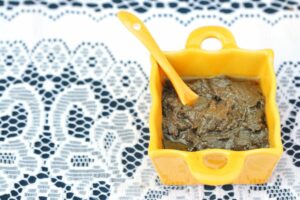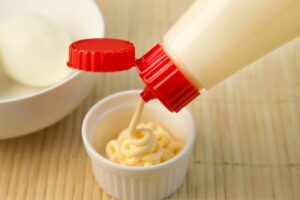Is there a dish that’s not exactly healthy but makes you say, “Damn the Torpedoes, full speed ahead,” every time you see it on the menu? — Well, for us, that’s pancakes.
One serving of plain pancakes has around 250 calories, 8 gr of fat, 8 gr of protein, 37 gr of carbohydrates, and 7 gr of sugar — and the largest contributor to calories is butter.
So, what’s the solution? Can you cook pancakes without butter? Yes, you can. Here are the greatest oil-free recipes and butter substitutes so you never have to say goodbye to pancakes.
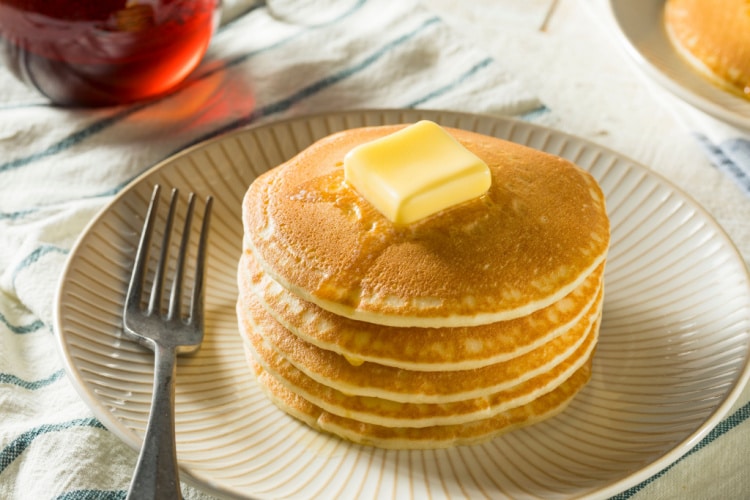
Replacement for Butter in Pancakes
- Ghee
- Avocado
- Olive oil
- Coconut oil
- Canola oil
1. Ghee
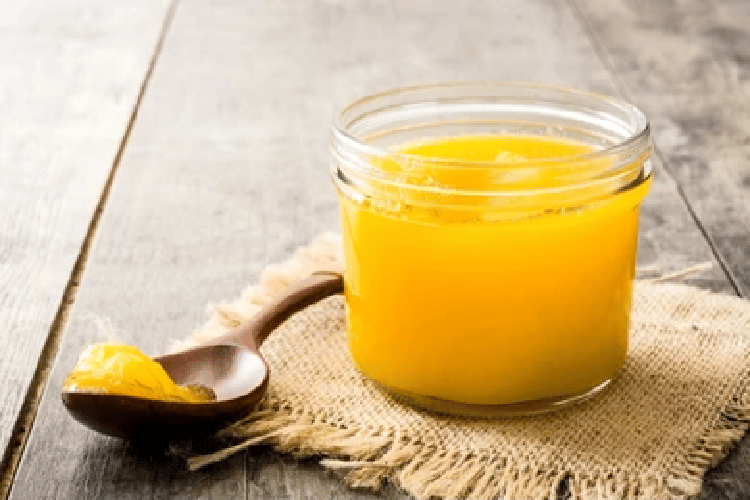
Ghee is a nutty-flavored clarified butter. It’s a safe butter alternative for people with lactose intolerance since it’s casein and lactose-free.
Ghee functions best when heated to high temperatures. It will provide more moisture than butter since it has higher water content. As a result, you might need to modify the ratio of flour to water in your pancake mix.
You can swap butter with ghee 1:1 for delicious pancakes.
2. Avocado
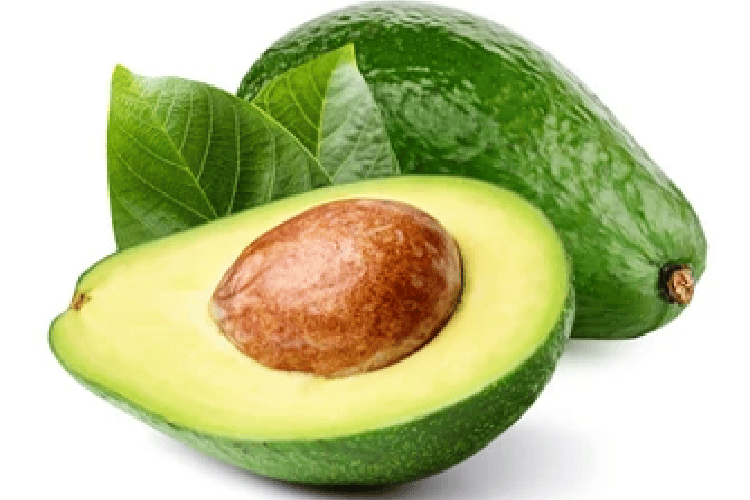
Mashed avocado has a creamy, butter-like texture on toast and bread. Why not use it as a butter alternative in pancakes too?
Avocados are packed with healthy fats, fiber, and vitamins which all contribute to better health. They give pancakes a thick and creamy texture, and the results taste wonderful. For optimum results, purée the avocado before adding it to the batter.
You can use one cup of pureed avocado for 2 tbsp of butter.
3. Olive Oil
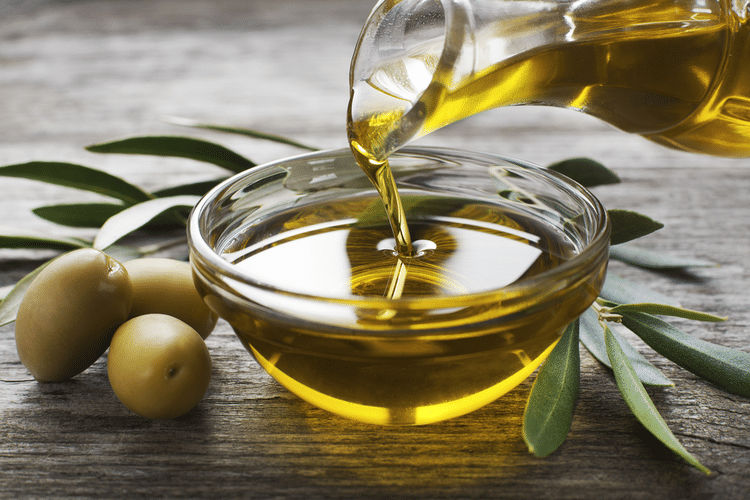
Pure olive oil has a bitter aroma that compliments savory dishes like salads and seafood. To ensure the bitterness doesn’t interfere with the pancake’s sweetness, use extra virgin olive oil.
Extra virgin olive oil is one of the healthiest substitutes for butter in pancakes. In contrast to the sharpness of pure olive oil, it has a fruity flavor that pairs nicely with sweet dishes.
You can use 3 ¾ cups of olive oil instead of 1 cup of butter. You can also brush the pan with it, so your pancakes don’t stick to the bottom.
4. Coconut Oil
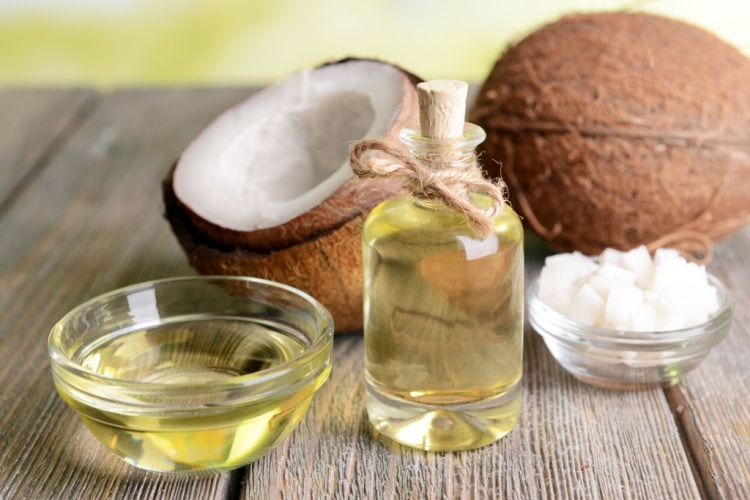
The most delicious alternative to butter might be coconut oil. It’s a butter substitute for muffins, cakes, cookies, and fluffy breakfast (or midnight!) pancakes.
Like butter, it melts when heated and hardens when cooled. You might notice a tiny shift in flavor, but coconut-flavored pancakes don’t sound too horrible, do they?
Use one cup of coconut oil in place of one cup of butter. Melt it before you mix it into the batter.
5. Canola Oil
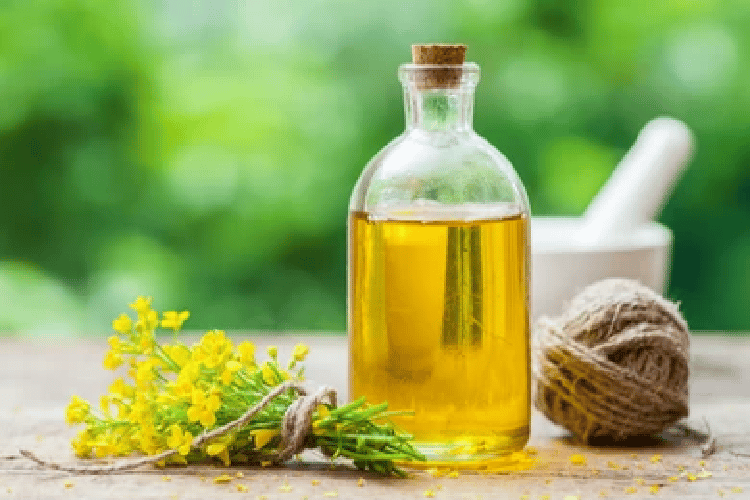
You might already have canola oil on hand — it’s a common cooking oil that contains heart-healthy monounsaturated and polyunsaturated fatty acids. It’s an inexpensive alternative with little to no flavor.
Canola oil is also great for coating your pan or skillet. Butter tastes great, but it can brown your pancake really quickly. Since canola oil has a higher smoke point than butter, you can safely cook multiple rounds without burning the oil.
When adding it to the butter mixture, make sure to use 3 tbsp of canola oil for every 2 tbsp of butter.
Tips & Tricks for Making the Perfect Pancakes
A stack of light, fluffy pancakes is what dreams are made of. You can easily make the fluffiest, tastiest pancakes with our tips.
Avoid Subpar Ingredients
Flat pancakes are the result of old baking soda. Using a package that is no older than six months will ensure that your pancakes are as fluffy as they can possibly be.
You can also opt for unbleached flour, as it has more nutrients and makes for a better, healthier pancake.
Don’t Overmix
It’s easy to overmix your pancake batter in an attempt to remove all lumps, but we advise against it.
The gluten in the flour is activated as you stir, creating tough, chewy pancakes. Combine the ingredients and stir gently until the flour is completely incorporated.
Additionally, you must pick the appropriate whisk for the task. When making pancake batter, a balloon whisk is better than a narrower, more traditional French whisk.
Measure Ingredients
Pancake batters are finicky, and you should carefully measure the ingredients for the best result.
For example, with too little baking soda, your pancakes won’t rise high enough. They will rise excessively and have a slightly bitter flavor if you add too much.
To avoid uneven pancakes, get out your trusty measuring spoons and cups, and follow the precise directions and proportions the recipe suggests.
Don’t Add too Many Toppings
Refrain from going overboard — even a handful of delectable berries or chocolate chips add more than enough richness and flair.
Too many fillings will make your batter heavy and uneven, and the toppings might sink through the batter and burn in the pan.
Don’t Add Butter to The Pan or Griddle
Using butter in your pan or griddle to cook your pancakes isn’t the best option.
Butter consists of milk particles, which tend to burn easily when heated to high temperatures. Clarified butter is separated from its milk solids, so it doesn’t burn as easily. If you don’t have clarified butter at hand, neutral oils like grapeseed or canola will work best.
Use a Ladle
Pouring the batter directly into the pan might not be a good idea. Even though you may have fewer dishes to clean, pouring the batter directly from the mixing bowl will result in misshaped and sloppy pancakes.
To make absolutely uniform pancakes, use a ladle or tiny measuring cup.
Flip them When You See Bubbles
You need some patience to avoid under or overcooked pancakes.
Don’t flip the pancakes until you see bubbles forming on the surface. If the bottom has browned already, the heat is too high. If the bottom isn’t golden, but bubbles have formed, then the heat is too low. Adjust the heat to medium and watch how it goes.
Pick the Right Syrup
If you want the best pancake experience, commercial pancake syrups should be your last resort.
These syrups contain artificial flavors and are manufactured with processed sugar. To keep things delicious, stick with pure maple syrup.
If you don’t have it on hand, try skipping the syrup completely. Instead, use fresh fruit, whipped cream, or honey.
You might also be interested in: 10 Healthy Butter Substitutes for Toast (Very Tasty!)
Conclusion
Congrats on making it to the end of the article — you are now a professional pancake maker that strives for healthier ingredients without compromising taste, which we love.
So, which butter substitute will you use in your pancakes? Do you want to add additional flavor with coconut oil or prefer a healthy and delectable alternative, such as avocado? You can also use ghee that tastes like butter but with a nutty finish. Vegetable oils like canola or extra virgin olive oil are another alternative.
The choice is yours — you may try a new one every time you make a brand-new batch to find your favorite.

